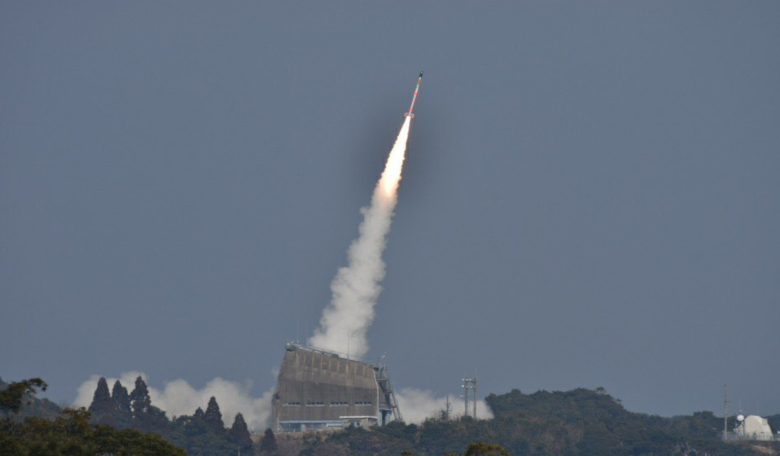Japan successfully tested a rocket engine that was propelled by shock waves produced by burning a mixture of methane and oxygen gases, the country’s space agency said Tuesday.
Known officially as a pulse detonation engine (PDE), it was launched aboard a S-520-31 sounding rocket – a powerful single-stage rocket capable of lofting a 100 kilogram payload far above 300 kilometres – from the country’s Uchinoura Space Center in Kagoshima Prefecture at around 5:30 am on 27 July..
It reached an altitude of 235 kilometres, four minutes and four seconds after launch and landed in the sea southeast of Uchinoura about eight minutes later, Japan Times reports.
JAXA later retrieved a capsule containing test data in nearby waters.
“This experiment is the world’s first flight demonstration of rocket engine technology that safely and efficiently converts shock waves (explosive waves) generated when a mixed gas of fuel and oxygen reacts explosively into thrust,” JAXA said, according to Parabolic Arc.
Currently in development with Jiro Kasahara, a Nagoya University Engineering professor, a pulse detonation engine (PDE) is a type of propulsion system that uses detonation waves to combust the fuel and oxidiser mixture.
The engine is pulsed because the mixture must be renewed in the combustion chamber between each detonation wave and the next.
As the combustion takes place so rapidly – Kasahar and JAXAs system produces self-sustained combustion waves that propagate with a shock wave at hypersonic speeds of 2-3 kilometres per second – the charge (fuel/air mix) does not have time to expand during this process.
As such, combustion takes place under almost constant volume, which in turn leads to greater fuel efficiency.
In addition to adding heat at a constant volume, a detonation wave also rapidly compresses the mixture meaning that moving parts like compressor spools are not necessarily required in a PDE engine.
This can significantly reduce overall weight and cost – a benefit its developers say could enable the production of engines just one-10th of the current size.
“Additional benefits achieved include that the detonation process only needs to be started once, has a large flow rate, and generates massive output per unit of area,” Kasahara says.
The engine, which could be ready for use in about five years, would be able to operate for extended periods of time for use on deep-space exploration missions.











